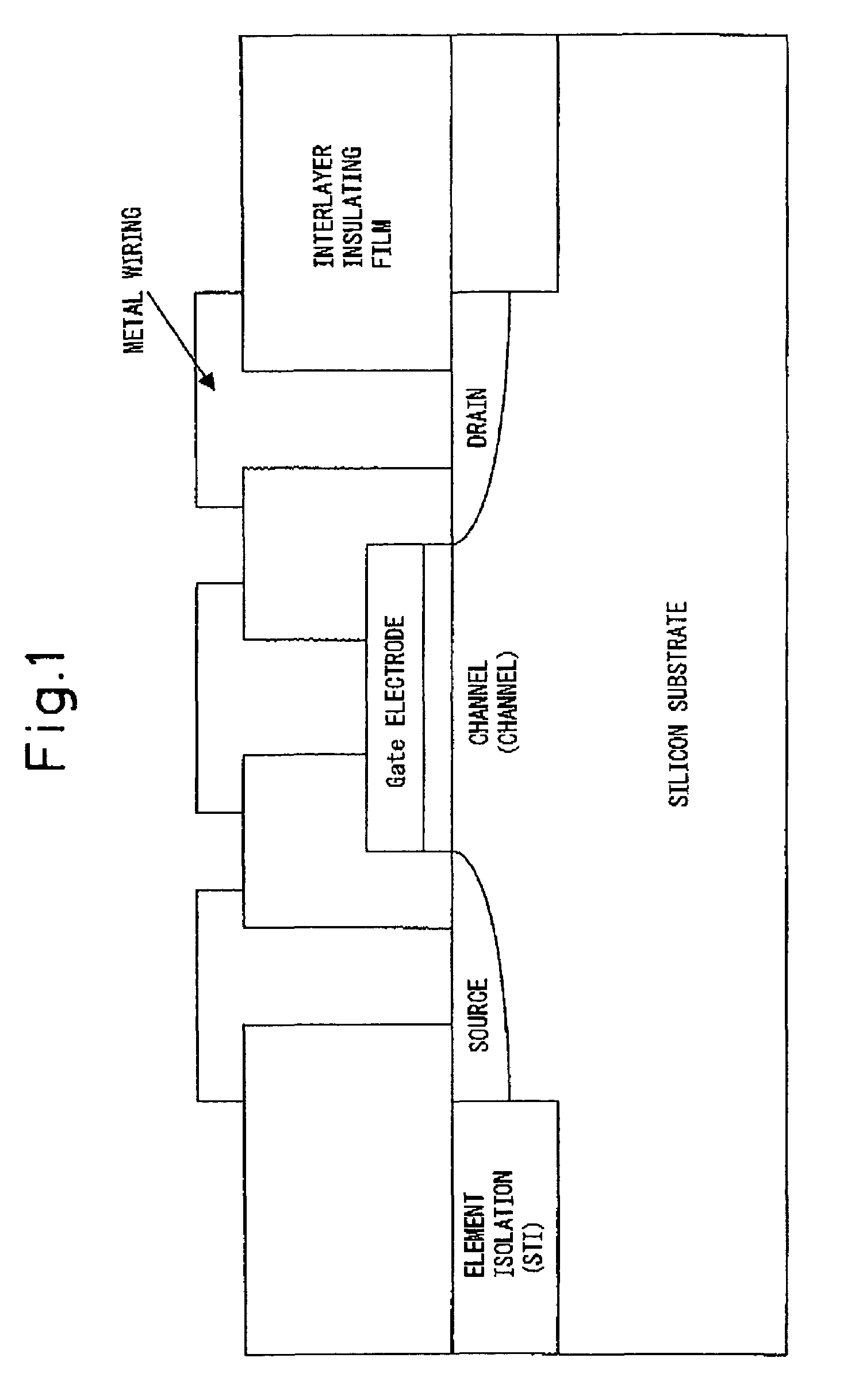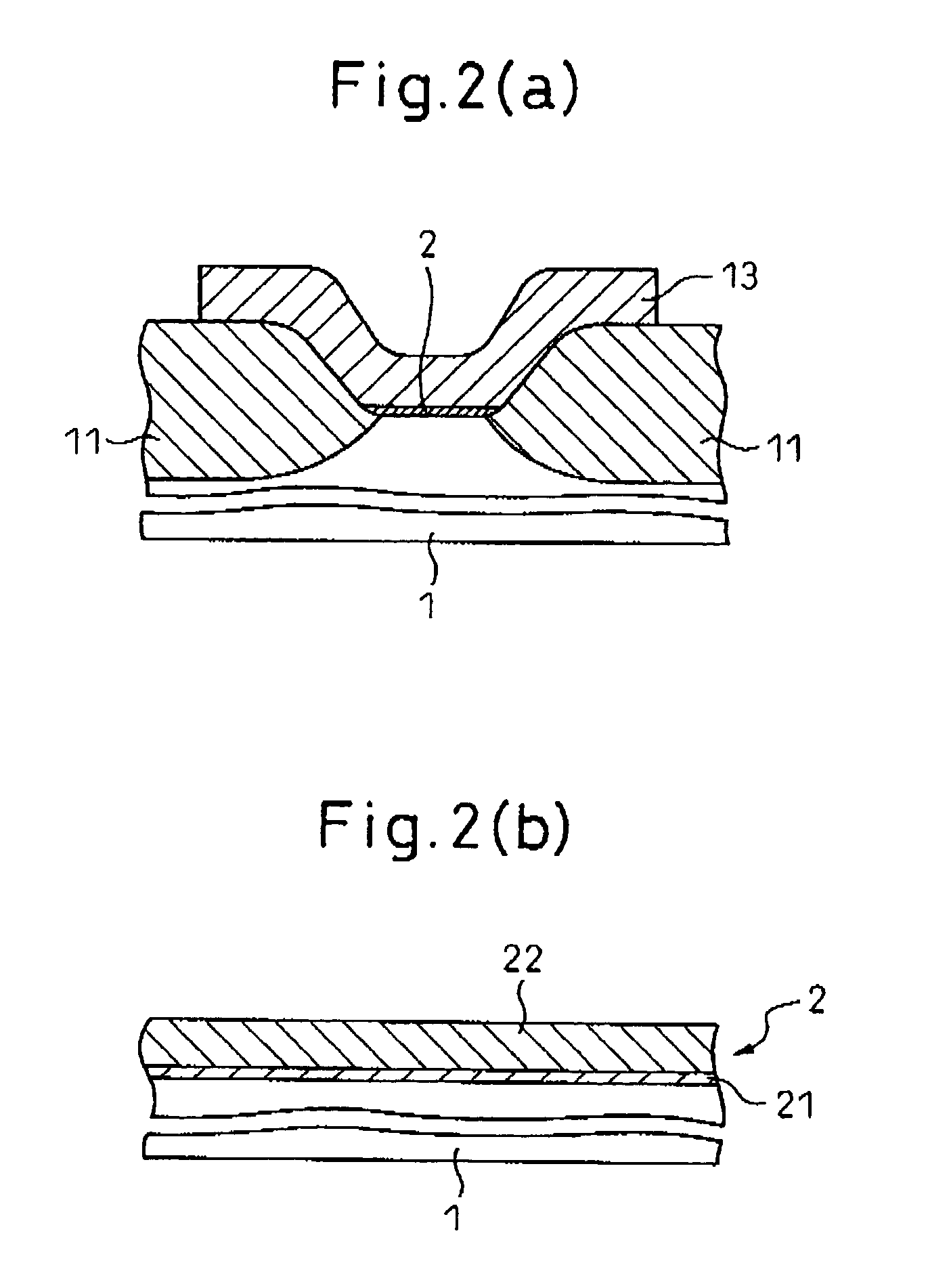Material for electronic device and process for producing the same
a technology for electronic devices and materials, applied in the direction of semiconductor devices, basic electric elements, electrical appliances, etc., can solve the problems of increasing power consumption, accelerating deterioration of device properties, and deterioration of semiconductor device properties, so as to prevent deterioration of properties and excellent properties
- Summary
- Abstract
- Description
- Claims
- Application Information
AI Technical Summary
Benefits of technology
Problems solved by technology
Method used
Image
Examples
embodiment of
(One Embodiment of Production Apparatus)
[0084]One preferred embodiment of the production process of the present invention is described below.
[0085]First, one example of the structure of a semiconductor device which can be produced by the production process of an electronic device material of the present invention is described by referring to FIG. 2 where the semiconductor device has an MOS structure using a gate insulating film as the insulating film.
[0086]Referring to FIG. 2(a), the reference numeral 1 in FIG. 2(a) is a silicon substrate, 11 is a field oxide film, 2 is a gate insulating film and 13 is a gate electrode. As described above, according to the production process of the present invention, a very thin and good-quality gate insulating film 2 can be formed. The gate insulating film 2 comprises, as shown in FIG. 2(b), a high-quality insulating film formed at the interface with the silicon substrate 1. For example, the gate insulating film is constituted by an oxide film 2 ha...
example 1
[0116]The oxynitride film subjected to evaluation described later was produced through the following steps (1) to (7).[0117](1) Substrate
[0118]A 20-cm (8-inch) P-type or N-type silicon substrate having a resistivity of 8 to 12 Ωcm and a plane direction of (100) was used for the substrate.[0119](2) Washing before Gate Oxidation
[0120]A natural oxide film and contaminant factors (metal, organic material and particle) were removed by RCA washing where APM (a mixed solution of ammonia:aqueous hydrogen peroxide:pure water=1:2:10, 60° C.), HPM (a mixed solution of hydrochloric acid:aqueous hydrogen peroxide:pure water=1:1:10, 60° C.) and DHF (a mixed solution of hydrofluoric acid:pure water=1:100, 23° C.) were combined. In the RCA washing, APM: 10 minutes→pure water rinsing: 10 minutes→DHF: 3 minutes→pure water rinsing: 10 minutes→HPM: 10 minutes→pure water rinsing: 10 minutes→final pure water rinsing: 5 minutes were performed and thereafter, IPA (isopropyl alcohol, 220° C.) drying was per...
example 2
[0130]Samples treated until the step (4) above in Example 1 each was subjected to SIMS analysis to evaluate the nitrogen content in film. At the same time, the oxygen and silicon element were analyzed and from these results, the nitridation reaction was examined.
[0131]FIGS. 9 to 13 each shows the secondary ion mass spectrometry (SIMS) results of nitrogen atom when the thermal oxide film is subjected to the nitridation plasma treatment. The abscissa denotes the film thickness and the ordinate denotes the nitrogen content. The SIMS conditions used here were as follows.
[0132]Measuring apparatus: Physical-Electronics 6650[0133]Primary ion species: Cs+[0134]Primary acceleration voltage: 0.75 KV[0135]Sputtering rate: about 9E-3 nm / sec[0136]Measurement region: diameter 420 μm×672 μm[0137]Degree of vacuum: 3E-7 Pa or less[0138]Measured ion polarity: +[0139]Charge-up compensation process: employed
[0140]The signal intensity of ion was converted into the concentration with use of a relative se...
PUM
| Property | Measurement | Unit |
|---|---|---|
| pressure | aaaaa | aaaaa |
| temperature | aaaaa | aaaaa |
| thickness | aaaaa | aaaaa |
Abstract
Description
Claims
Application Information
 Login to View More
Login to View More - R&D
- Intellectual Property
- Life Sciences
- Materials
- Tech Scout
- Unparalleled Data Quality
- Higher Quality Content
- 60% Fewer Hallucinations
Browse by: Latest US Patents, China's latest patents, Technical Efficacy Thesaurus, Application Domain, Technology Topic, Popular Technical Reports.
© 2025 PatSnap. All rights reserved.Legal|Privacy policy|Modern Slavery Act Transparency Statement|Sitemap|About US| Contact US: help@patsnap.com



